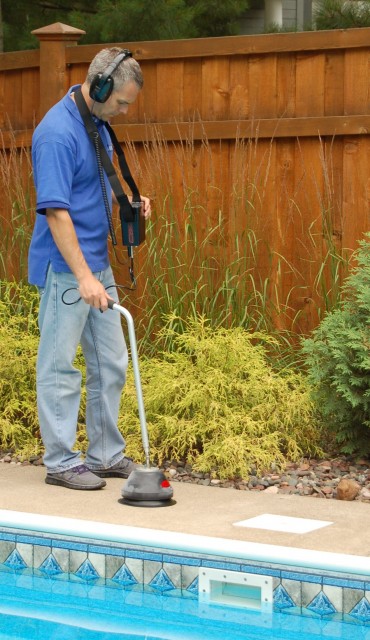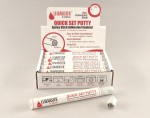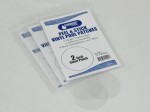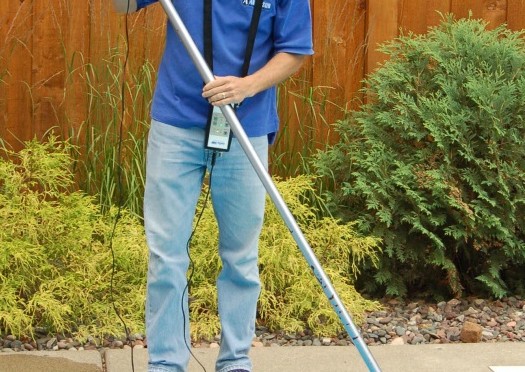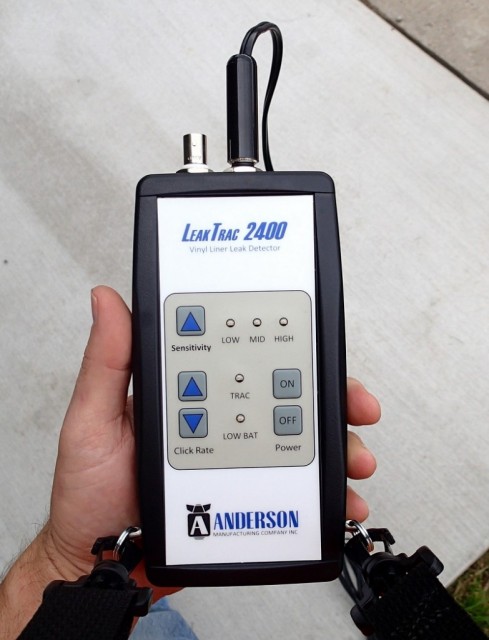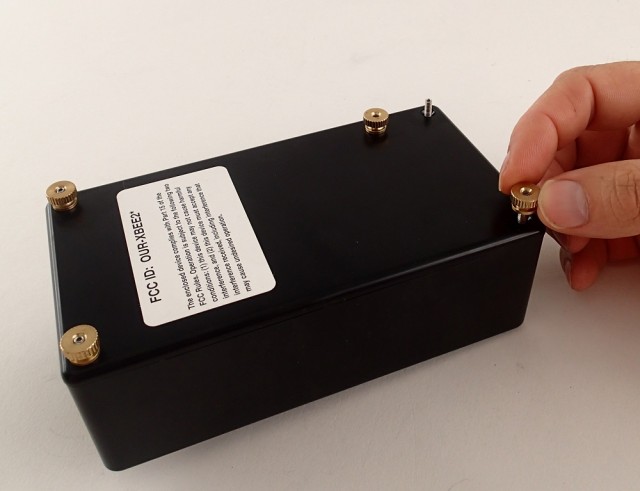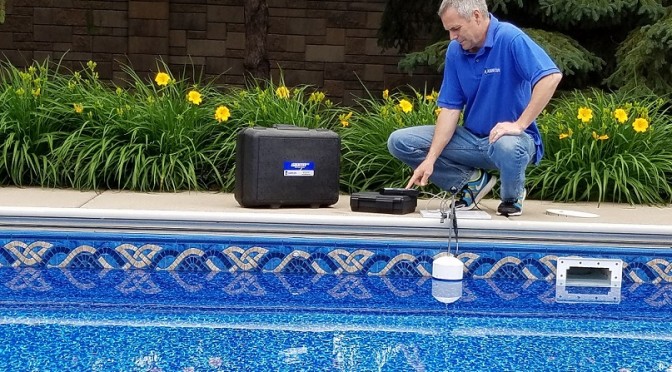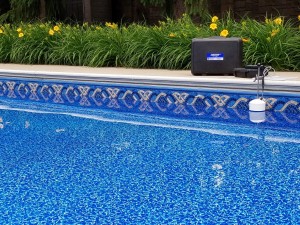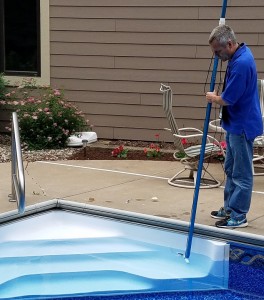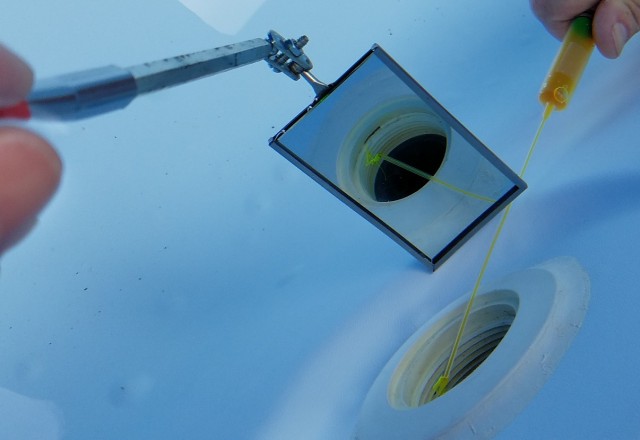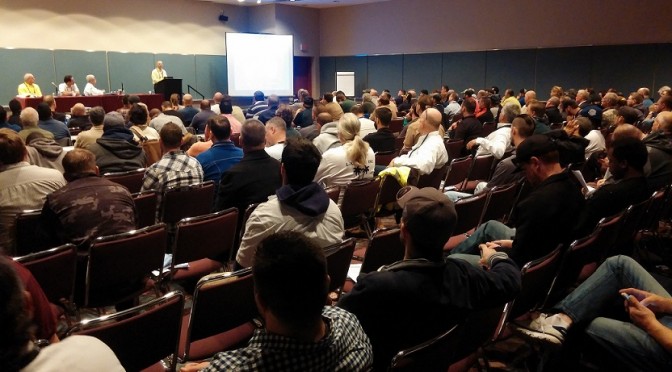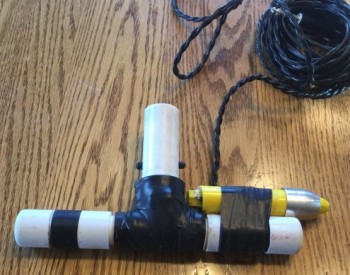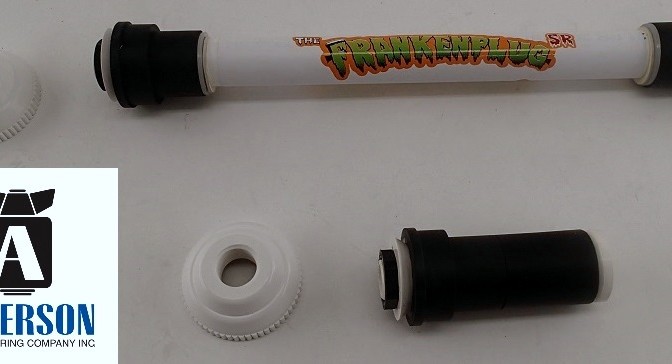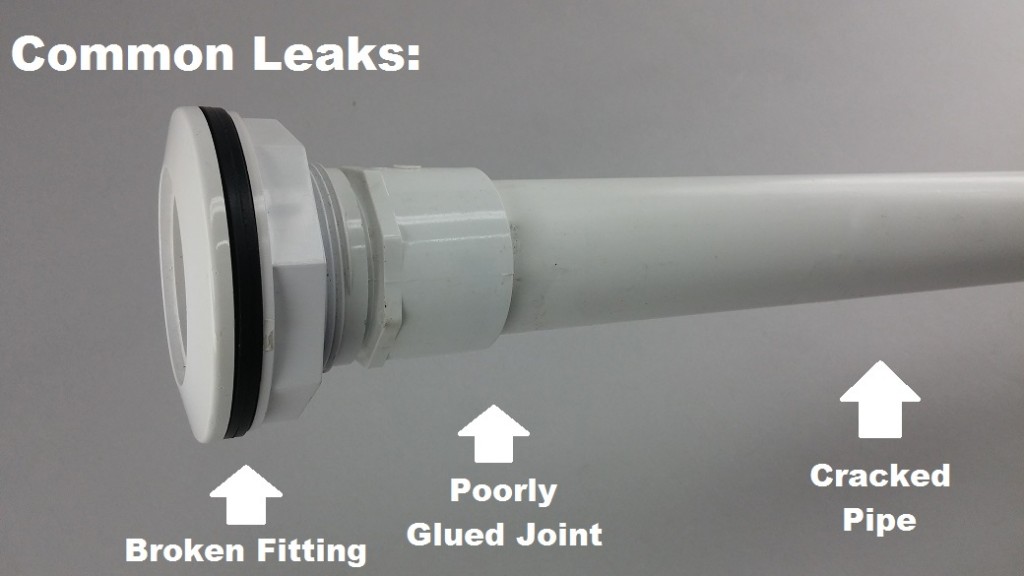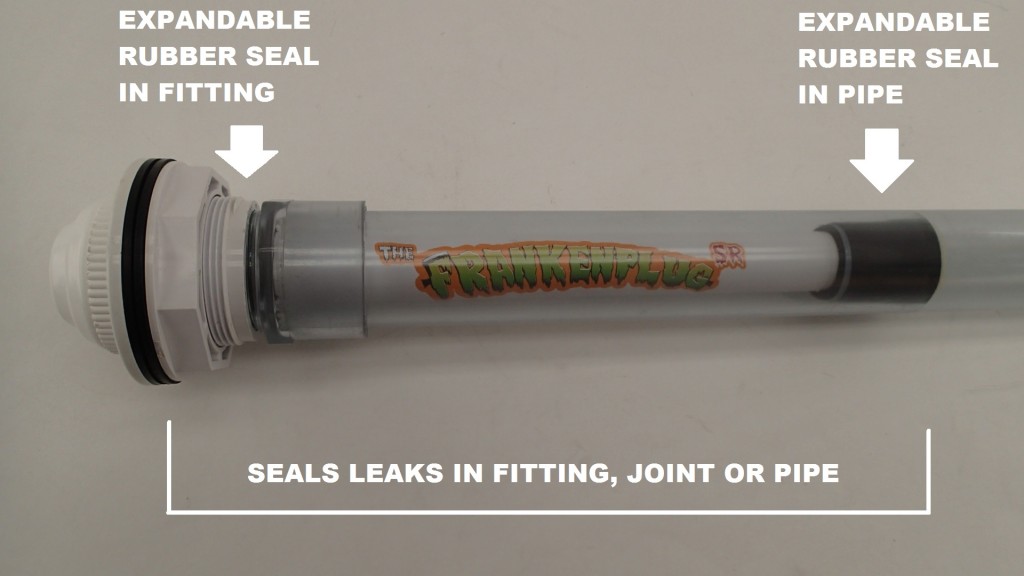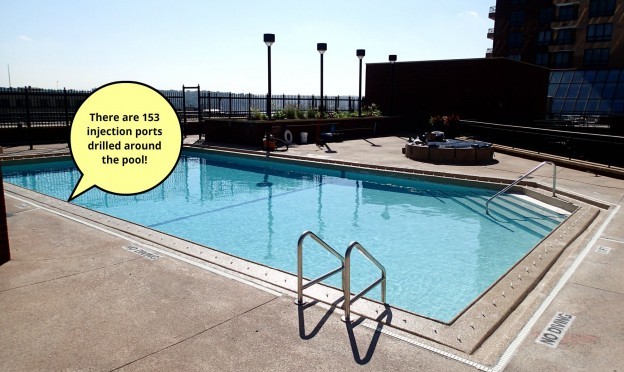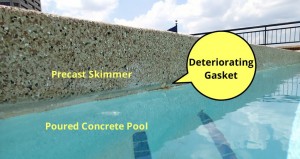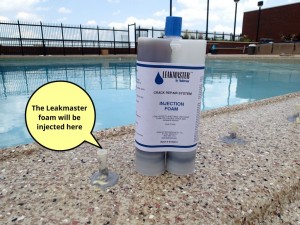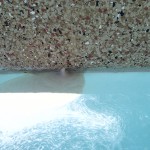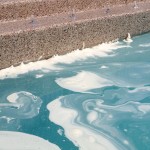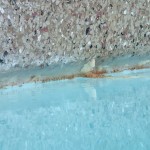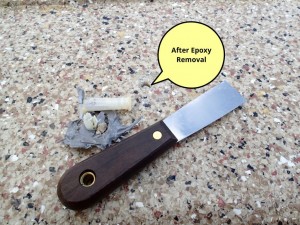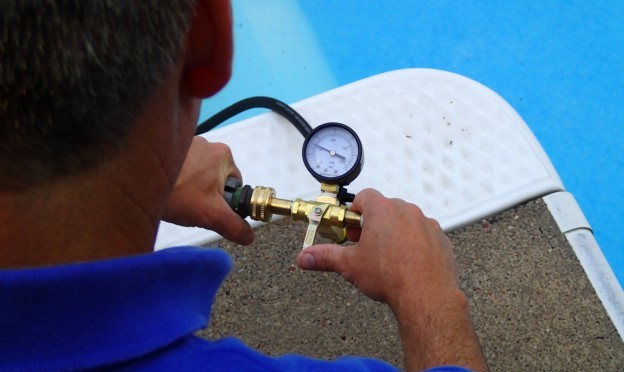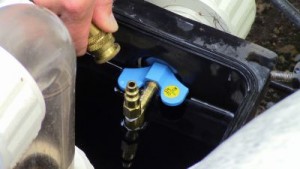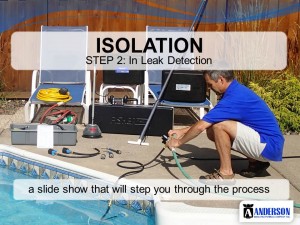When it comes those tough underground plumbing leaks, electronic listening devices are the backbone of the leak detection industry. While there are other methods the most reliable and consistent method is to make a noise at the leak with pressurized air escaping into water saturated soil, then listen for where the noise is coming from. This noise can sometimes be picked up by just an open ear but often a listening device is needed to help amplify the sound and filter out other noises to focus in on leak sound and pinpoint location.
Choosing the right listening device for your company is an important decision. When researching a product purchase, similar to listening for a leak, there can be a lot of “noise” to sift through. Here at Anderson Manufacturing we have combined research and testing with the experience of hundreds of pool leak detection professionals to find and keep the best option for a swimming pool leak listening device.
While there are many factors to think about such as cost, dependability and service after the sale. There are also some more technical criteria to consider when looking at purchasing a swimming pool leak listening device. Since listening devices range from your standard geophones to sophisticated technology here are some tips for what criteria to look at.
Important criteria to consider when comparing listening devices:
Sensitivity – how well the device amplifies sounds from the transmitting material
Frequency Range – how broadly the device can hear all the sounds created by a leak
Filtering – how effectively the device can filter out background noise enabling you to focus on a leak sound
The standard ground microphones that come with Fisher’s XLT17 and the XLT30H listening devices, use piezoelectric microphones because these are known to be the best type of microphone to use in situations where sounds are being picked up from liquids or solids. Virtually every company that makes serious equipment for locating underground plumbing leaks for municipal work incorporates piezoelectric technology. Accessing the technological knowledge of those who have experience in this area is one reason we have chosen to work with Fisher and utilize their products. This type of equipment requires more specialized expertise than standard microphone amplification (that used for music/voice etc.).
In practice you will find that sensitivity by itself however is not the only important performance criteria. Most any device will be able to amplify a sound to the point that it will hurt your ears. What’s more important is hearing the right sound and distinguishing it from background noise. That’s where the other two important criteria come into play.
Both pressurized underground plumbing leaks and static shell leaks in the pool make noises in a wide range of frequencies depending on a variety of conditions. We like to think of the sounds a leak makes in the same way we do instruments in an orchestra. You want to be able to hear everything from the shrillest piccolo to the deepest tuba. Although every leak is different, as general rule underground plumbing leaks make sounds in the lower frequency ranges while static leaks in the shell of the pool are in the higher range. If your listening device doesn’t pick up sounds at the top or bottom of this range you will be missing the fullness of the sound a leak makes or you may miss it altogether. Both the Fisher XLT17 and XLT30H pick up sounds in a frequency range of 20Hz to 6000Hz. In addition, the XLT30H includes a switch that enables the unit to work effectively both when sounds are in the low range (for underground leaks picked up by the Bigfoot microphone) and the higher ranges (for underwater leaks picked up by the hydrophone).
The final performance criteria, and what we consider to be the most important for swimming pool applications, is an area where Fisher devices particularly shine over all others we have researched. A listening devices filter allows you to specifically highlight (or eliminate) a specific range of sounds. Consider for instance that we only wanted to hear the violins in the orchestra of leak sounds we imagined above. Filtering is important because the devices are so sensitive that we will likely hear other sounds around the pool (it always seems as though the next door neighbor want to mow their grass when you’re trying to find a leak!). The filter helps us zero in on the leak sound without being distracted by the background noise. Additionally, different ranges of sound behave differently underground or underwater. Low frequency sounds travel much further than high frequency sounds. By selecting high frequency sounds once a leak sound has been identified the frequency filter can help in pinpointing leaks to a small area.
Fisher devices provide a wide range of filtering options to address most any scenario. The Band Pass filter allows selection of a narrow band of frequency anywhere in the range of sound. The Hi Pass filter focuses high frequency sounds providing adjustment of the low end of this range. The Low Pass filter does the opposite – focusing on the low end and providing an adjustable high end.. The XLT30H also includes a Notch Filter that allows the elimination of a specific frequency range (for instance to minimize the “hum” of a nearby air-conditioner) and can be used at the same time as the other filters.
Another noise minimizing feature available on Fisher devices is especially important when the unit is used for listening to pipes in the ground. The Bigfoot muffler utilized by Fisher to minimize outside noises transmitted through the air is the best we’ve seen. This rubber boot deadens outside noises preventing them from reaching the sensitive piezoelectric microphone which makes direct contact with the pool deck or ground through a heavy aluminum foot.
Ultimately, we are convinced, that Fisher Listening Devices as sold by Anderson Manufacturing Co. are the most technologically advanced, well rounded tool for all types of swimming pool acoustical leak location They have been continually improved through the years and currently represent the best package for addressing pool leak problems in both the plumbing and shell. We back our belief with the evidence of thousands of successful customers and a satisfaction guarantee that promises your money back if you are not satisfied with their performance.
If you have made it this far through this you have taken in a lot of information, hopefully it has been helpful in making decisions that will affect your leak detection success. Remember you can always call and talk through the buying process or for technical help regarding a leak or leak detection equipment. Thanks for reading!

